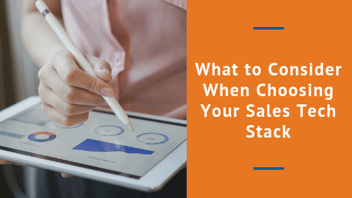You would think that when it comes to selling technology, the same B2B sales process should work for all target customers, right? After all, sales prospects are all suffering from similar pain points and seeking the same types of solutions, and so you should be able to apply the same selling techniques to meet your sales goals.
Wrong!
The way customers buy technology differs based on size and budget, and you need to use a different strategy for selling to small and medium-sized businesses (SMBs) than you would for enterprise customers. A successful SMB sales strategy requires you to match your sales approach with the size of the customer.
Just because SMB sales require a different strategy doesn’t mean you should skip this critical segment. SMB sales are ignored by many large technology companies because SMB contracts are smaller and require specialized effort. However, SMB sales represent a huge untapped and potentially profitable market.
There were 30.2 million SMBs in the United States in 2018, and SMB spending will reach $684 billion by 2021 according to International Data Corporation (IDC). SMBs are spending more on technology than ever, and though their individual budgets may be small, the potential cumulative profits from SMB sales is huge. The challenge is to find a cost-effective way to sell to SMBs to tap those profits.
SMB Sales Require Lower CAC
The contract size isn’t the only difference between enterprise and SMB sales. The actual sales process tends to be quite different as well.
With enterprise sales, you have different buying criteria and a larger group of decision makers. The purchase process is well defined, and there may be six or more executives who have to sign off on a purchase, which means multiple demos, meetings, and contract discussions.
Sales tend to be very high touch, with multiple sales calls until you can get a consensus to purchase. This process can take months, but the size of the contract makes the effort worthwhile.
With SMB sales, you tend to have one or two decision makers, often only the business owner. Unlike enterprise customers, SMBs have more difficulty defining exactly what they need and spend more time educating themselves before moving forward.
In fact, most B2B customers are 70 percent of the way through the buying process before they contact the vendor. They are wary of making the wrong decision, which often leads to no decision and no purchase.
You can work more closely with enterprise customers, developing customized strategies to meet their needs. The SMB buyer is self-selecting, and you need to nurture the relationship with the right content until they are ready to engage.
Successful SMB sales require minimal customer acquisition cost (CAC) to increase the value of the contract, usually with the help of sales technology and by outsourcing lead generation and qualification.
Match Your Sales Resources to LTV
For successful SMB sales, you need to increase the lifetime value (LTV) of the SMB customer to justify the cost of sales. Lowering CAC is only the first step.
Your CAC:LTV ratio represents a customer’s value to the company over time and is a quick way to assess profitability. LTV is generally calculated as the sum of the average purchase value, the purchase frequency (assuming you’re using subscription sales), customer value, and average customer lifespan, divided by customer churn rate. Ideally, you want to maintain a CAC:LTV ratio of 1:3 or higher; for every dollar spent on CAC, you gain $3 in long-term revenue.
With enterprise sales, the size of the recurring contract can justify a more intensive, hands-on customer acquisition and sales process. With SMB sales, you need to be able to control costs throughout the entire CAC, sales, and renewal process, which means more digital interaction. Let’s consider the two different types of Buyer’s Journeys.
For enterprise sales, the sales process is linear and sometimes represented by the acronym SPANCO—suspect, prospect, approach, negotiate, close, order. This is high-touch sales, wherein one-to-one interaction and persistence leads to a deal. With SMB sales, the process is indirect.
Typically, an SMB prospect comes looking for information, is qualified by a lead development representative (LDR), and is then nurtured via email to provide additional website visits and gather more information. Eventually, the SMB prospect steps forward and requests a trial or a sales contact, at which point the account executive (AE) closes the deal and turns the relationship over to the Customer Success team.
By allocating the appropriate resources, you can control costs and maintain the right CAC:LTV ratio. For example, when enterprise sales are high touch, much of the SMB lead acquisition and nurturing process is automated to be as cost-effective as possible.
The type of information you need to provide is different as well. Enterprise customers have a better understanding of their needs and tend to look for solutions with specific capabilities. SMBs tend to start with less understanding and need to do more research, so part of your role has to be that of an educator. The content you provide should be informative, insightful, and relevant to the SMB owner’s needs.
In addition to automating lead capture and nurturing, you can reduce CAC and increase LTV by outsourcing SMB sales. A Sales as a Service® partner has the staff, expertise, and resources to manage SMB sales for substantially less when compared with internal sales. Consider the additional staffing costs and overhead.
If the average salary for a lead development rep is around $50,000, you can expect to spend twice as much when you consider taxes, benefits, training, and so on. And then there is the cost of infrastructure. You also have to add costs for office space, phones, internet access, and software licenses. Plus, partnering with a Sales as a Service company allows you to ramp your sales team faster and gives you more market agility.
SMB sales represent the forgotten space for many organizations, but the sales process is easy to navigate if you understand how to work with SMBs and apply the right sales tools.



![[EBOOK] Tapping into the Rich Market of Small and Medium-Sized Businesses](https://no-cache.hubspot.com/cta/default/2602672/f87bd59a-589c-4e5a-8e66-4e34cc05683a.png)




